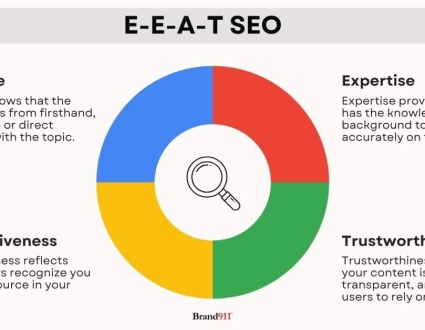You work hard to build your career, but what if your online image hasn’t kept up?
Maybe your LinkedIn profile feels outdated, or a quick Google search doesn’t reflect your current work and goals. That mismatch can make it harder for the right people to find or trust you.
A personal brand audit helps you fix that by bringing your online presence back in sync with who you are today.
What Is a Personal Brand Audit (and Why It Matters)
When someone Googles your name, what shows up? That’s your personal brand in action.
A personal brand audit is a check-up of your online presence and public image to see how well it reflects your professional goals and identity.
It matters because your digital footprint shapes first impressions. A clear, consistent brand helps you stand out, attract the right opportunities, and communicate your value with confidence.
According to LinkedIn, 71% of professionals believe a strong personal brand is essential for career growth.
Here’s how to audit your personal brand step-by-step.
5 Steps to Conduct a Personal Brand Audit
Step 1: Review Your Online Presence
Start by seeing what others see. Google your name and look closely at the first page of results. Are the links accurate, current, and professional? If something feels outdated or irrelevant, make a note of it. Your digital footprint tells people who you are before you even meet them — make sure it’s saying the right things.
Next, review your social media profiles. Check LinkedIn, Instagram, Facebook, and X to see if your headline, bio, and visuals align. Your activity should reflect your professional identity, not distract from it.
If you have a personal website, review its tone, design, and content for consistency. It should clearly communicate your expertise and make it easy for visitors to understand what you do.
Set up Google Alerts for your name to stay updated on new mentions or online activity.
For more on shaping what shows up in search, see our guide on How to Rank for Your Name.
Step 2: Assess External Perception
Your online presence shows one side of the story — but how others describe you can reveal just as much.
Ask trusted colleagues, mentors, or clients how they’d define your professional brand. What qualities or strengths come to mind first? Are there common themes?
Compare this feedback to how you want to be seen. If there’s a gap between the two, that’s where you should focus next.
You can gather insight informally through conversations or use a quick LinkedIn poll or survey to collect responses at scale. The goal isn’t to seek validation but to understand whether your message is landing the way you intend.
Step 3: Evaluate Internal Alignment
A strong personal brand starts with authenticity. Before you focus on design, content, or keywords, make sure what you’re sharing actually reflects who you are.
Take a step back and think about your core strengths, values, and long-term goals.
- What do you stand for?
- What motivates your work?
- What do you want people to remember after interacting with you online?
Then, look at how that story shows up in your digital presence.
- Does your LinkedIn bio sound like you — or like a version of yourself you’ve outgrown?
- Are your posts aligned with the kind of work you want to be known for?
Authenticity builds trust, and trust drives opportunities.
If your online image doesn’t feel genuine or up to date, it’s time to refine your message. Revisit your personal brand statement and make sure it captures who you are today, not who you were when you first wrote it. As your career evolves, your brand should evolve too.
Need help finding the right words? Check out our guide on How to Write a Personal Brand Statement.
Step 4: Identify Gaps and Opportunities
Once you’ve compared how you see yourself with how others see you, it’s time to look for gaps.
Maybe your online profiles don’t mention recent achievements, or your photos feel outdated. Perhaps your tone on social media doesn’t match the level of professionalism you want to convey.
Prioritize the biggest fixes first. Start with:
- Outdated information
- Inconsistent visuals
- Missing messaging.
These small updates can make a major difference in how people perceive your personal brand.
And if you come across negative or unwanted content, don’t panic. Make a note to address it strategically. You can learn more in our Online Brand Protection guide.
Step 5: Take Action and Maintain Consistency
Now that you’ve gathered insights, turn them into action. Update your profiles to reflect your current goals and rewrite bios that no longer fit.
- Refresh visuals
- Clean up old posts
- Align your tone across every platform you use.
Consistency is key. Keep your message clear and professional, whether you’re posting on LinkedIn, updating your website, or writing a short bio for an event. Plan to repeat your personal brand audit every six to twelve months to stay on track.
Keep an eye on your visibility metrics — search results, LinkedIn analytics, or website traffic — to measure progress over time.
Take Control of Your Personal Brand
A personal brand audit gives you clarity and control over how you’re seen online. It helps you uncover gaps, refine your message, and make sure your online presence accurately reflects who you are and where you’re heading.
Your personal brand isn’t static — it should grow as you do. Set time aside each year to review your profiles, update your messaging, and realign your online presence with your current goals. Consistent attention keeps your brand clear, credible, and true to you.
Ready to see how your online presence stacks up? Our personal branding services help professionals like you assess, strengthen, and grow your personal brand online.
FAQs About Personal Brand Audits
What is a personal brand audit?
A personal brand audit is a structured review of how your online image reflects your professional identity and goals. It helps you see how others perceive you and identify what’s working, what’s outdated, and what needs improvement.
How do you audit your personal brand online?
Start by searching your name on Google and reviewing the first page of results. Then, check your social media profiles and personal website for consistency and accuracy. Finally, ask trusted colleagues or mentors for feedback to see how your image aligns with your goals.
How often should you do a personal brand audit?
Conduct a personal brand audit once or twice a year, or anytime your career direction or professional image changes. Regular reviews keep your brand current and aligned with your evolving goals.
What are the key elements of a personal brand audit?
The main elements are alignment, consistency, and differentiation — making sure your message is clear, unified across platforms, and highlights what makes you unique.
What are the 5 A’s of personal branding?
The 5 A’s are awareness, authority, appearance, authenticity, and audience. Together, they define how well your brand communicates who you are and what you offer.
What is the best way to audit your own personal brand?
The best place to start is with a Google search of your name. Review the results as if you were a potential client or employer, and take note of what stands out — both good and bad.
What are the 7 pillars of personal branding?
The 7 pillars are trust, authenticity, expertise, consistency, visibility, value, and relationships. These pillars help shape how others experience your professional presence.
What is the 3–7–27 rule of branding?
The 3–7–27 rule reminds you to keep your message short and clear: you have 3 seconds to grab attention, 7 seconds to communicate value, and 27 words to express your core message.
What is the golden rule of personal branding?
Be authentic. The strongest personal brands reflect real values, genuine strengths, and a clear sense of purpose.
What are the 3 C’s of personal branding?
The 3 C’s are clarity, consistency, and constancy. They ensure your brand message is easy to understand, dependable across platforms, and reinforced over time.
About us and this blog
We are a digital marketing company with a focus on helping our customers achieve great results across several key areas.
Request a free quote
We offer professional SEO services that help websites increase their organic search score drastically in order to compete for the highest rankings even when it comes to highly competitive keywords.
Subscribe to our newsletter!
More from our blog
See all postsRecent Posts
- How to Distribute a Press Release (Without Wasting Time or Money) December 23, 2025
- What Is SEO Content? A Comprehensive Guide December 18, 2025
- How to Rebrand Yourself: A Practical 5-Step Plan for Professionals December 16, 2025



















Recent Comments